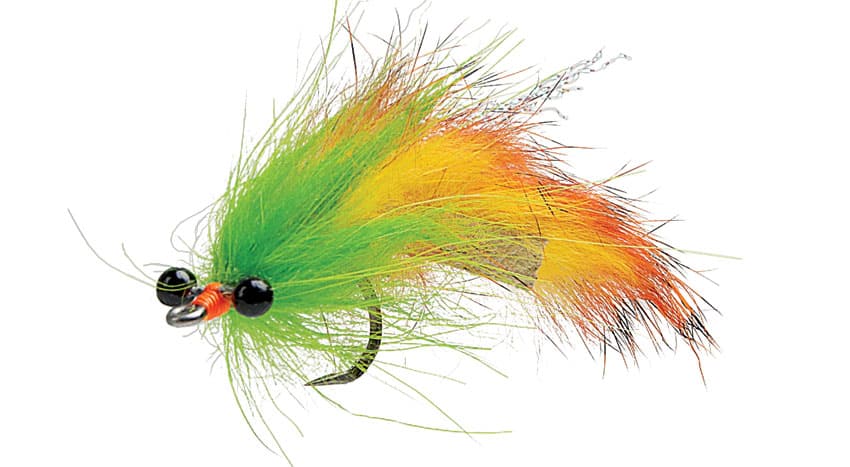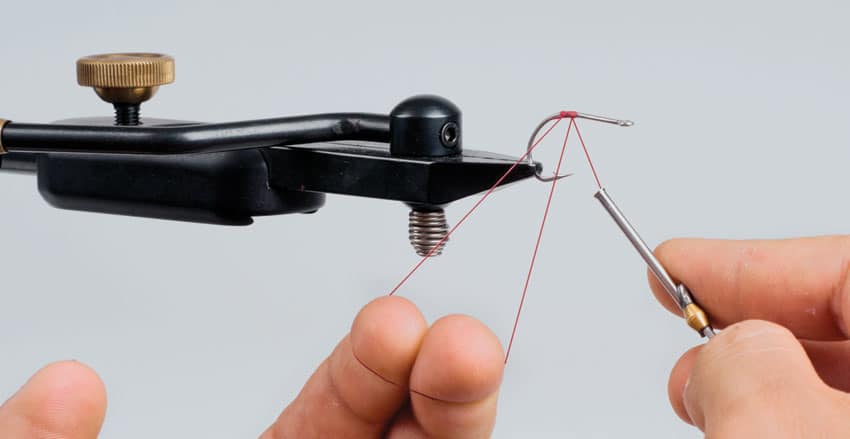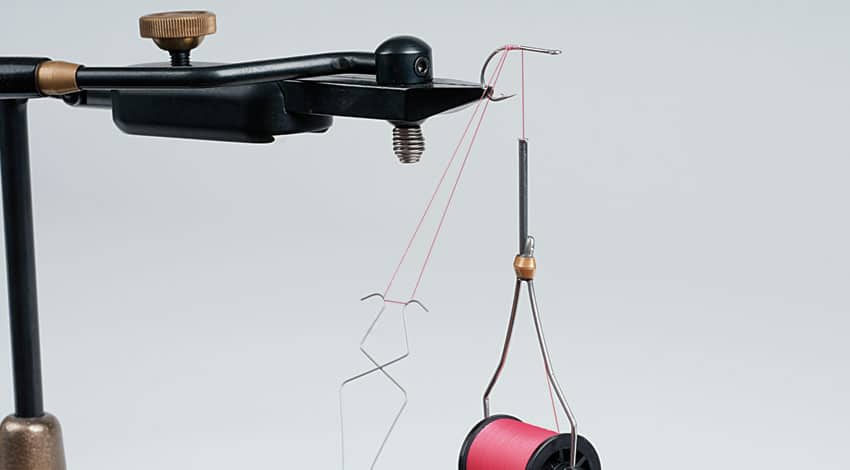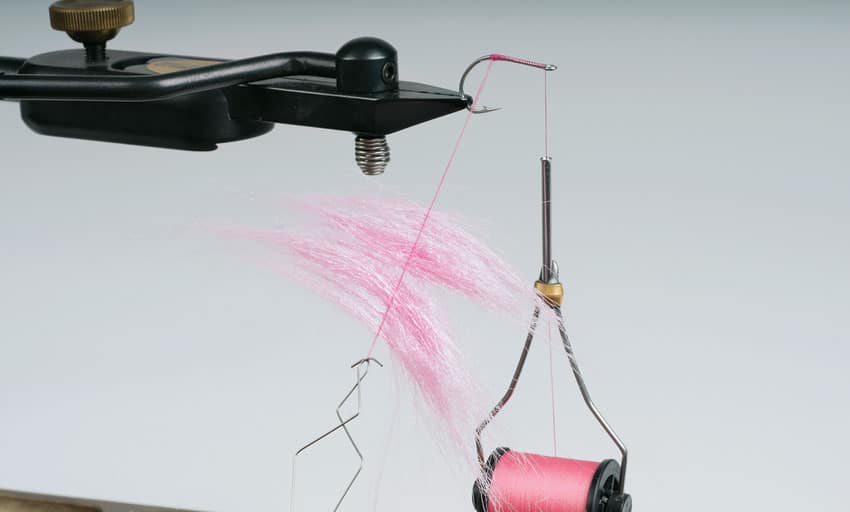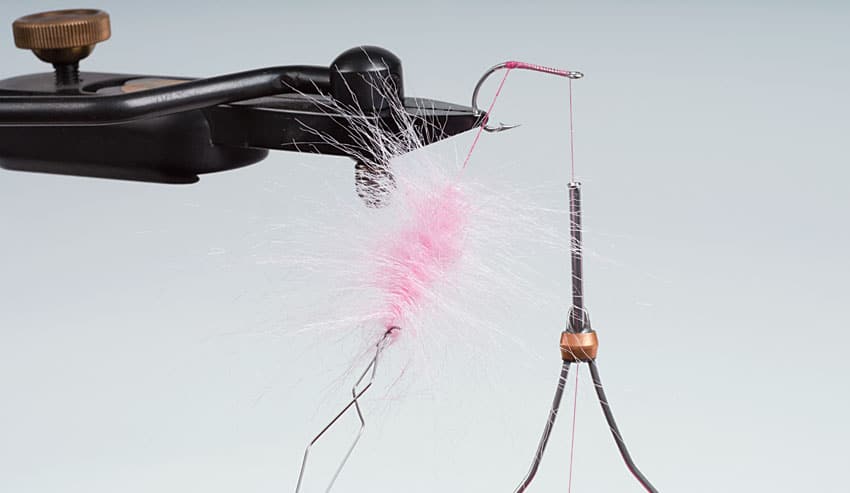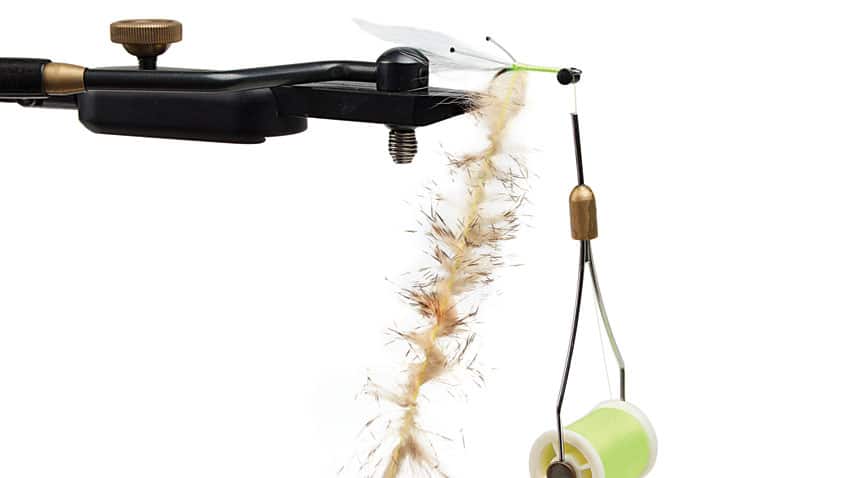
Once thought of as a freshwater technique to create the bodies of various nymphs and dry flies, dubbing has been making a splash among saltwater fly tiers too. With the popularity of brushes to create anything from shrimp and crab flies to a new twist on classic tarpon collars, many tiers have started blending their own dubs to transform old patterns and create new ones.
Like many saltwater tiers, I never had a use for dubbing, mainly because I thought it was limited to materials with short fibers. Beyond shrimp bodies and slim-profile minnows, I didn’t see how it could play a big role in saltwater fly tying. However, I quickly learned from several creative tiers that materials with longer fibers could be used in a totally different manner with the help of a dubbing loop. This technique makes it possible to create wide-profile baitfish bodies, crabs and bushy collars for tarpon flies. And unlike with pre-made brushes, the saltwater tier’s horizon is almost limitless with the array of natural and synthetic materials available today.
After playing with various natural and synthetic fibers, I found that some are better than others for dubbing. There is a Goldilocks balance when it comes to the ideal material. Some materials are too soft, with the tendency to tangle up into themselves when the dubbing loop is twisted; these eventually ball up into something that looks like the end of a Q-tip. Other materials are too stiff, making it nearly impossible to attain any desirable shape when they are wrapped down the shank. However, there are plenty of materials out there that are just right for dubbing.
Popular Dubbing Materials
When dubbing with natural fibers, I’m especially fond of arctic fox, rabbit and Finn raccoon. I personally feel that there aren’t any other natural materials that breathe as well as these do and have the same durability. I like the rabbit and arctic fox for tarpon fly collars, smaller-size baitfish patterns and shrimp and crab bodies. These fibers are short to medium in length, both are pretty easy to dub with, and they come in almost every color under the sun. When I’m looking to tie larger collars and produce a bulky overall appearance in a fly, my go-to dubbing material is raccoon hair. It has a soft underfur and course guard hairs, which gives it a balance of length and breathability. It’s important to mention that this hair is prone to tangles when used at its full length. You can alleviate this somewhat by making fewer twists in the loop and putting less tension on the thread while spinning. If you use half as much material as you think you need and use a toothbrush to comb through any potential rats’ nests, it will work out fine.
**
Creating Blends**
When you become comfortable dubbing, blending materials and colors allows you to incorporate more texture and action into your fly. This can be as simple as staging different colors within the loop for a variegated look or as complex as combining different types of materials to achieve an appropriate balance of body to action.
When experimenting with blends, I start with a 50-50 mix and add more of one until I get the right balance. This works great for baitfish patterns in which lots of action and a specific shape are needed. Being able to have, and govern the amount of, short and long fibers in a dubbing loop gives you control over action and shape.
When blending shorter fibers, I find it best to cut a clump of each material I want to blend, place them all in a stack in one hand, and pull small sections out and replace them in the stack until I feel the materials are blended sufficiently. For the longer fibers, I use a hairbrush method. This is done by holding what I want blended in one hand loosely and brushing through the fibers with the other, allowing the bristles to pull the fibers from my hand. When the brush has caught most of the hair, I pull it from the bristles and repeat if necessary.
Dubbing isn’t limited to natural materials only. One of my favorite synthetics to dub is craft fur. When craft fur is blended with material such as squirrel tail and placed inside a dubbing loop, you can pack it tightly on the hook shank and trim it down into a beautiful crab carapace. Also, flash material such as angel hair is excellent in blends. By experimenting with hairs and fibers you have on hand, you’ll quickly find new uses for the basics.
Adding materials via dubbing loops is such an easy and effective technique, I’m almost embarrassed to admit that it took me so long to realize the potential for some of my saltwater patterns. From wide-profile baitfish flies to tarpon flies to shrimp and crab patterns, dubbing is a useful technique that will undoubtedly come in handy when you want to get creative at the vise.
View Gallery at Top of Page for Dubbing Instructions

